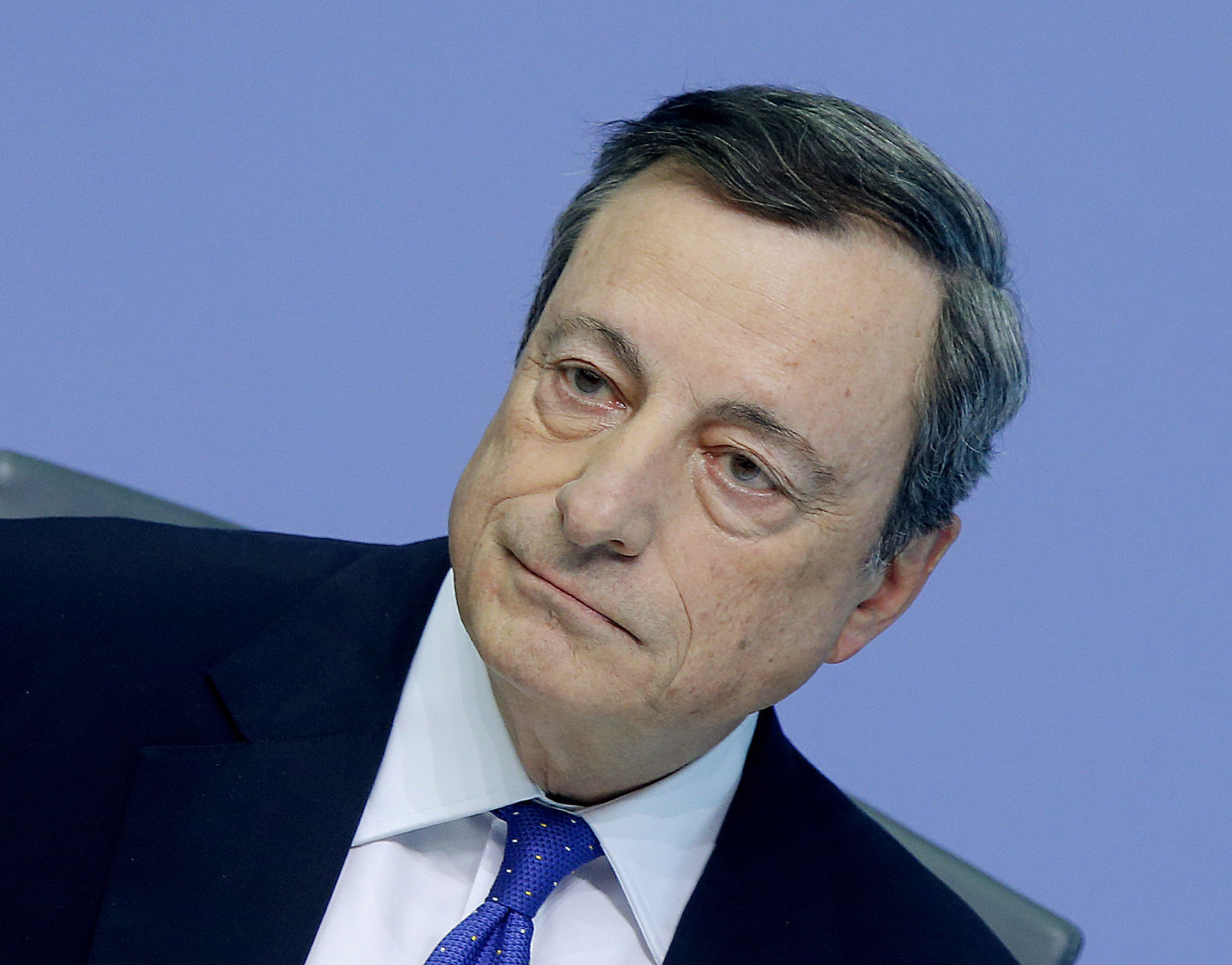FRANKFURT, Germany (AP) — The economy of the 19 countries that use the euro currency is growing ever stronger, and it’s time for the European Central Bank to start telling the public how it will phase out its extraordinary stimulus
FRANKFURT, Germany (AP) — The economy of the 19 countries that use the euro currency is growing ever stronger, and it’s time for the European Central Bank to start telling the public how it will phase out its extraordinary stimulus measures.
But rest assured: The era of easy money isn’t ending just yet in Europe, say analysts. The bank will ease off its month bond-buying stimulus slowly — and interest rates likely won’t be raised for nearly another two years.
While ECB President Mario Draghi and other officials have said that they will decide on some aspects of stimulus withdrawal at their meeting Thursday, they have also gone to great lengths to underline that stimulus will end very, very gently.
The bank made clear at its last meeting Sept. 7 that “a substantial degree of monetary accommodation was still needed.” That’s financial jargon for low rates and plentiful cheap credit from the central bank in order to support lending to businesses.
In practical terms the bank’s stance means that the 60 billion euros ($71 billion) in monthly bond purchases, which help keep borrowing rates low in the economy, might be cut back in January to, say, 30 billion euros per month and then ended sometime in the second half of 2018.
But that’s not the end of central bank support by any means: Draghi and his colleagues at the ECB have said that their benchmark interest rate — which steers short term rates across the economy — will stay at its record low of zero “well past” the end of the bond purchases.
That likely means zero rates until the middle of 2019, almost two years from now.
A rate increase then would be Draghi’s first while in office as ECB head — just weeks before his eight-year term ends on Oct. 31, 2019.
Here’s what the ECB’s cautious withdrawal might mean in practice:
— Savers, particularly in wealthy, financially conservative Germany, will continue to grumble about zero returns on conservative holdings such as bank accounts and retirement savings products.
— Riskier investments, such as stocks, have every chance to keep on doing well.
— Countries like Italy that still have huge public debt loads left over from the eurozone debt crisis face less risk of bond market selloffs like the ones that threatened to break up the shared currency zone in 2011-12. A faster pace of stimulus withdrawal might mean a steeper rise in their borrowing costs.
“The ECB will reduce the stimulus, but it’s still a stimulus,” said Michael Herzum, head of multi-asset strategy at Union Investment in Frankfurt. “And all this is taking place against the background of an improved situation on the capital markets and the economy… The world economy is healing and no longer needs this very strong medicine from the central banks.”
“And in this environment, riskier investments such as stocks can continue to do well.”
Herzum points out that the peak for central bank balance sheets — the pile of bonds purchased with newly printed money — will not come until the middle of next year. Central bank bond purchases pump money into the financial system, driving down interest rates on safer investments like bonds and pushing investors toward riskier but higher yielding assets such as stocks. The ECB’s portfolio should keep rising until it hits about 2.6 trillion euros in bonds held for monetary policy purposes. That’s an enormous shot of stimulus, and the ECB stresses it plans to keep reinvesting the bond proceeds as they mature rather than let them run down, extending the impact of the stimulus.
The U.S. Federal Reserve is farther along in withdrawing stimulus and has said it plans to slowly start letting its $4.5 trillion bond pile run down as the bonds mature. But that reduction in stimulus will only be done in a “gradual and predictable manner” to keep interest rates from rising too quickly and unsettling markets.
Stock markets so far have been unflustered. Germany’s DAX blue chip index closed Friday at 12,991, not far off a record high hit earlier in the week; the Dow Jones closed Thursday at a record of 23,163.04.
The ECB is so cautious in part because a quick withdrawal of stimulus could push stock markets down and push up the euro.
ECB officials say that, so far, markets appear to show little reaction.
“Naturally, for this to be possible, monetary policy recalibration must be quite gradual. That will be the case of the ECB,” ECB Vice President Vitor Constancio said in a speech Tuesday.
Another reason for caution is that annual inflation of 1.5 percent hasn’t reached the ECB’s goal of just under 2 percent. The ECB is throttling back stimulus in hopes that the broad-based European economic recovery will eventually let workers bargain higher wages and drive up inflation, but it can’t quit abruptly before the inflation goal is reached. The eurozone showed annual growth of 2.3 percent in the second quarter.
Carsten Brzeski, chief economist at ING Germany, predicted the ECB would cut its monthly bond purchases from 60 billion euros to 25 billion euros but keep them running until the very end of 2018, an option he called “lower for longer.”
“Next week’s ECB meeting should be a sea change,” he said, “Not a rough one but a very mild and cautious one.”


